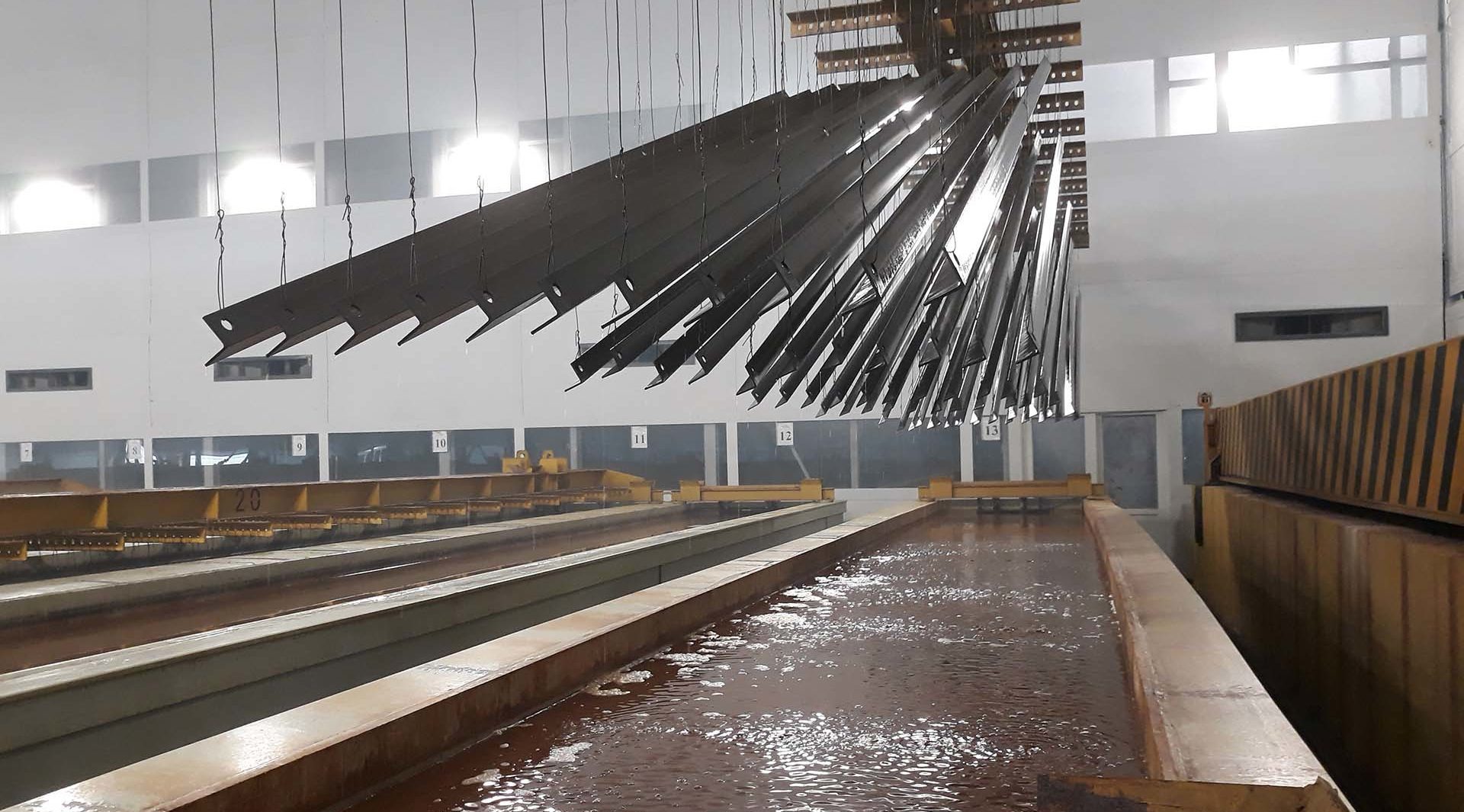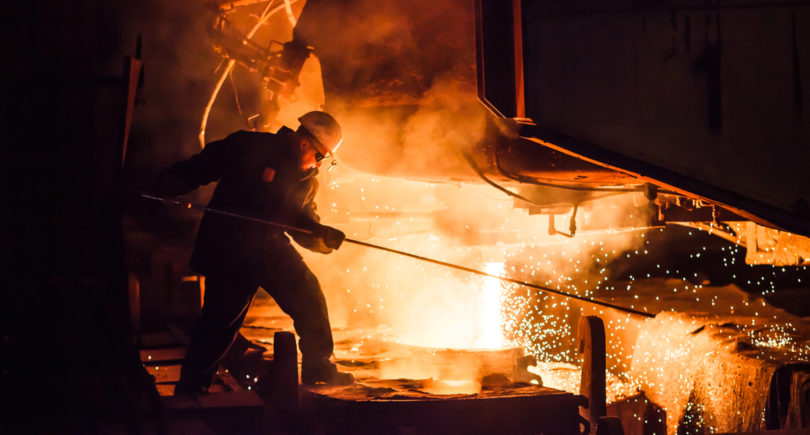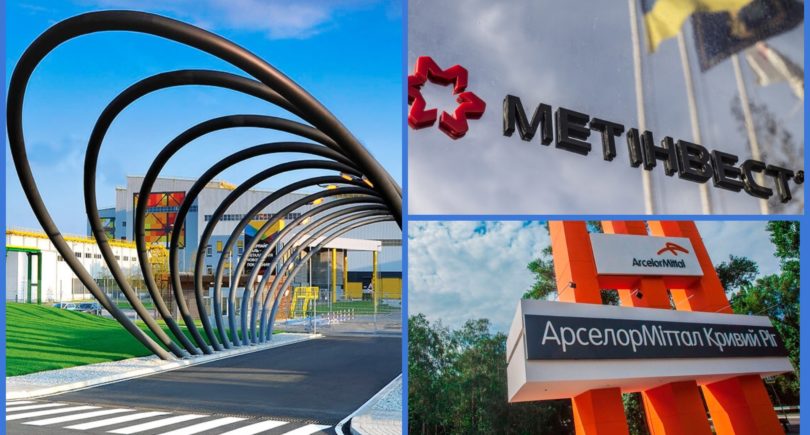
Posts Companies galvanizing 2492 26 June 2023
Market operators estimate current demand at the level of 30% of pre-war volumes
In current conditions, hot-dip galvanizing of steel structures is an indicator of the infrastructural recovery of the country. Construction and restoration of highways and bridges, industrial and energy facilities – all this requires steel structures with an anti-corrosion coating.
The market situation
Like other areas of the economy, the hot-dip galvanizing industry was also affected by hostilities. Since the first days, there has been a significant – approximately 40-50% – decrease in production at most Ukrainian enterprises.
According to Andriy Pelehovich, commercial director of Ekran LLC (TM First Ukrainian Zinc Plant), the volume of the hot-dip galvanizing market in Ukraine in 2022 is difficult to calculate, but it is estimated to have fallen by 50% or more. For comparison: according to separate calculations, in the pre-war years 2018-2019, the total market volume of hot-dip galvanizing services of steel structures in Ukraine amounted to 48 thousand tons and 55 thousand tons, respectively.
«The war fundamentally changed the picture of the Ukrainian hot-dip galvanizing market and set it back by 10-12 years. Seasonality is more clearly visible, which was less evident in all recent years until 2022», adds the expert.
Some of the owners of zinc facilities took them out of operation (conserved) immediately after the start of the war. This also happened for reasons of technological safety – it is important to quickly and correctly drain the molten zinc from the bath.
Some productions located in front-line areas and areas of active hostilities were forced to stop. In this regard, the geography of hot galvanizing services has undergone changes. Currently, galvanizing plants are operating in Central and Western Ukraine. In general, it is important to calculate the current total capacity of the hot-dip galvanizing market.
Many industrial enterprises from the frontline regions have relocated to safer regions. But the transportation of galvanizing plants is complicated by the very specifics of the technological process.
In the conditions of war, you should not expect full loading of any production or industrial services. Metal Invest notes that their current workload reaches 60% (total production capacity – 2,000 tons per month), that is, the company has not yet reached pre-war production volumes. The situation is similar with other market operators. For its part, the capacity of the First Ukrainian Zinc Plant has been loaded by 30-50% in different months since the beginning of the current year (the design production capacity is 1,000 tons per month). In turn, the current workload of Euroformat Stalconstruction is 300 t of raw materials for delivery per month.
Currently, four hot-dip galvanizing plants continue to operate in Central and Western Ukraine. Facilities in cities close to the front did not resume their work.
Some of the surveyed operators indicate that since the beginning of the year, prices for hot-dip galvanizing services have increased by 10-20%. This is primarily due to the increase in the cost of imported raw materials, exchange rates and energy resources. The cost of galvanizing depends on the volume and nature of steel structures, so the average range is UAH 20-30 including VAT per kilogram of the product.
On the other hand, there is also a reverse price trend. In the cost of galvanizing, a large specific weight is taken directly by the cost of zinc. On the global market, zinc prices are falling, so Ukrainian companies had to reduce the cost of their services by an average of 3-5%.
Export demand
Interviewed market operators note a certain revival of demand for hot-dip galvanizing services in recent months. According to Oleksandr Dunayskyi, in the last few months the demand has increased by 30-40%. This is primarily due to the fact that Ukrainian enterprises are trying to export their products to the European market.
«In the second quarter, we see a recovery in demand, but the situation in the first quarter was even worse than in the second and third quarters of last year», adds Pelehovych.
Yevgen Dyachenko, head of the galvanizing department of the Euroformat Stalconstruction company, notes the recovery of demand in June. At the same time, demand has not yet recovered after 2022: it is now at the level of 30% of pre-war volumes.
During the war, the portfolio of Metal Invest did not undergo significant changes. As before, the company galvanizes structures for construction, construction of highways, agricultural complex, energy industry, but unfortunately, there is a decrease in demand from energy companies.
«We make steel structures to order with subsequent galvanizing, or (this method prevails) customers themselves provide ready-made products for galvanizing. In the first case, we usually buy steel from Metinvest», says Dunayskyi.
At Euroformat Stalconstruction the portfolio of orders has not changed structurally either, it has simply become smaller. Positive dynamics are set by the agricultural sector, fencing systems (galvanizing welded mesh) and various export products (systems for warehouses, warehouse equipment).
According to Andriy Pelehovych, now main amount of customers are represented by exporters and less often by companies that have reliable Ukrainian customers. As for the branch affiliation of clients, it is possible to single out companies working for export, agro-industrial complex, customers from the field of urban infrastructure improvement, and partly companies engaged in road construction.
Market prospects
Of course, the hope of companies for the growth of demand for hot-dip galvanizing is connected with the complex restoration of the infrastructure damaged by the war. But the interviewed market players practically do not see the growth of such demand yet – similar orders are received, but these are drops amid pre-war indicators.
«Currently, taking into account the degree of destruction that Ukraine has suffered, we do not see a significant increase in demand for the restoration of the damaged infrastructure. Therefore, we hope for an improvement in the situation, for complex actions to restore the infrastructure – various types of construction, energy capacities, highways, bridges and other things, which will form the demand for hot-dip galvanizing services,» says Dunayskyi.
As Dyachenko notes, now the bridges are being restored as a priority in order to provide logistical routes and they are gradually beginning to be provided with galvanized fencing systems.
Market operators assess its prospects in different ways, although they are all related to the end of hostilities. The Metal Invest company expects that this year the volume of the hot-dip galvanizing market will grow by at least 30%, which will have a positive effect on the general economic condition of Ukraine and the dynamics of the restoration of war-damaged infrastructure. However, according to Andriy Pelehovych, there will be no significant market growth until the end of active hostilities.
«The prospects in the hot-dip galvanizing market are very good. It will be necessary to restore and build a lot. The president’s major construction program has not yet been completed, it has been interrupted by the war. And the restoration of the destroyed infrastructure is still a very large volume in galvanizing, and I think that even today it is not estimated and does not even have approximate figures. But these prospects depend very much on when we drive the occupiers out of our territory,» Dyachenko sums up.
Thus, the future dynamics of the hot-dip galvanizing services market depends on the pace and nature of the restoration of the destroyed infrastructure. It is possible to ascertain the implementation of point restoration projects (housing, highways, bridges), and not the implementation of a specific comprehensive program. It can be expected that the end of active hostilities will be the factor that will drive the growth of demand for hot-dip galvanizing services.





